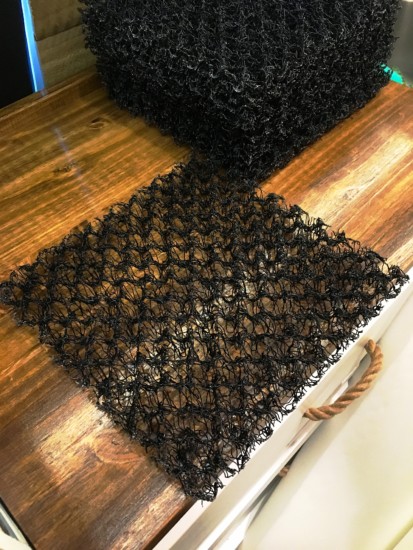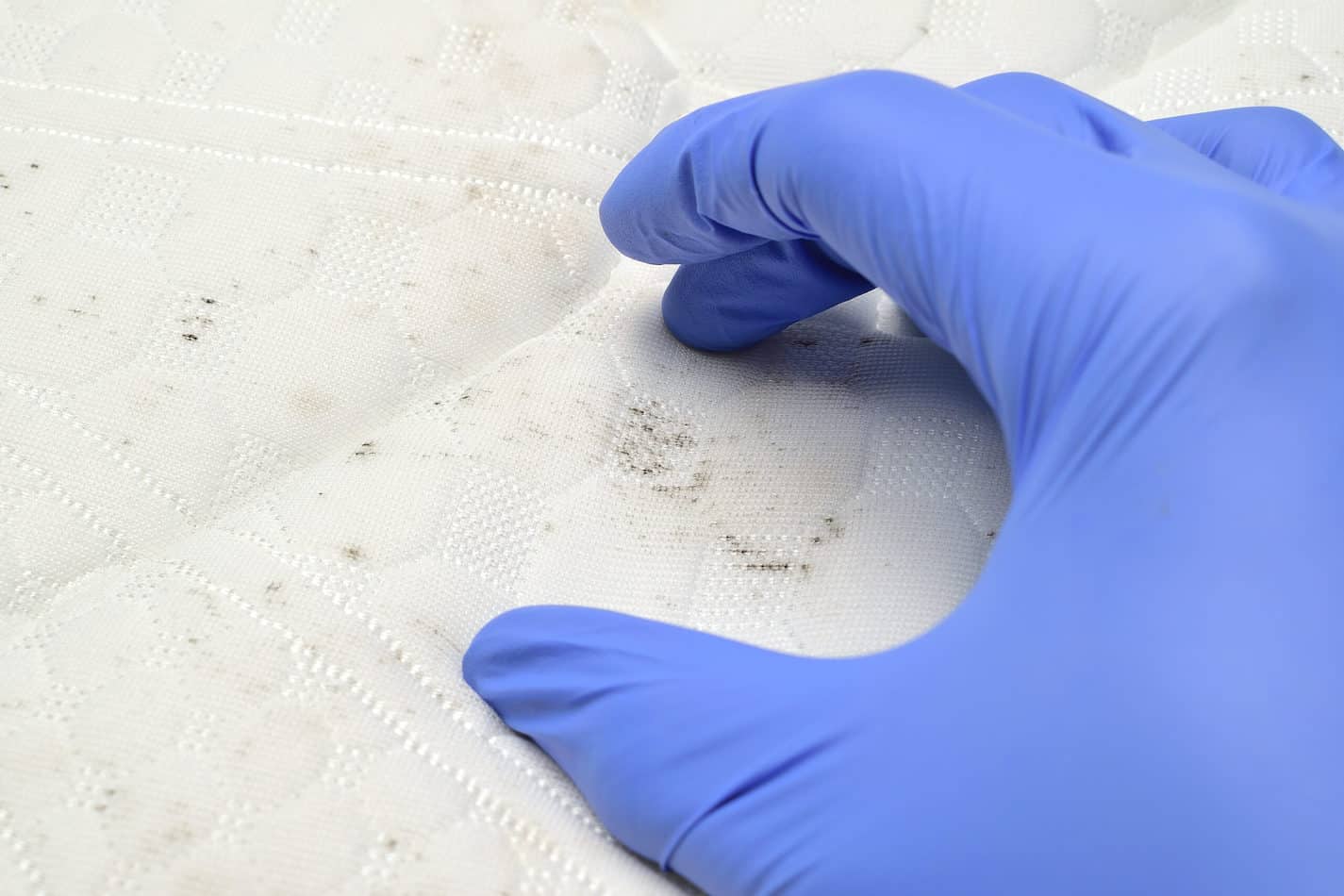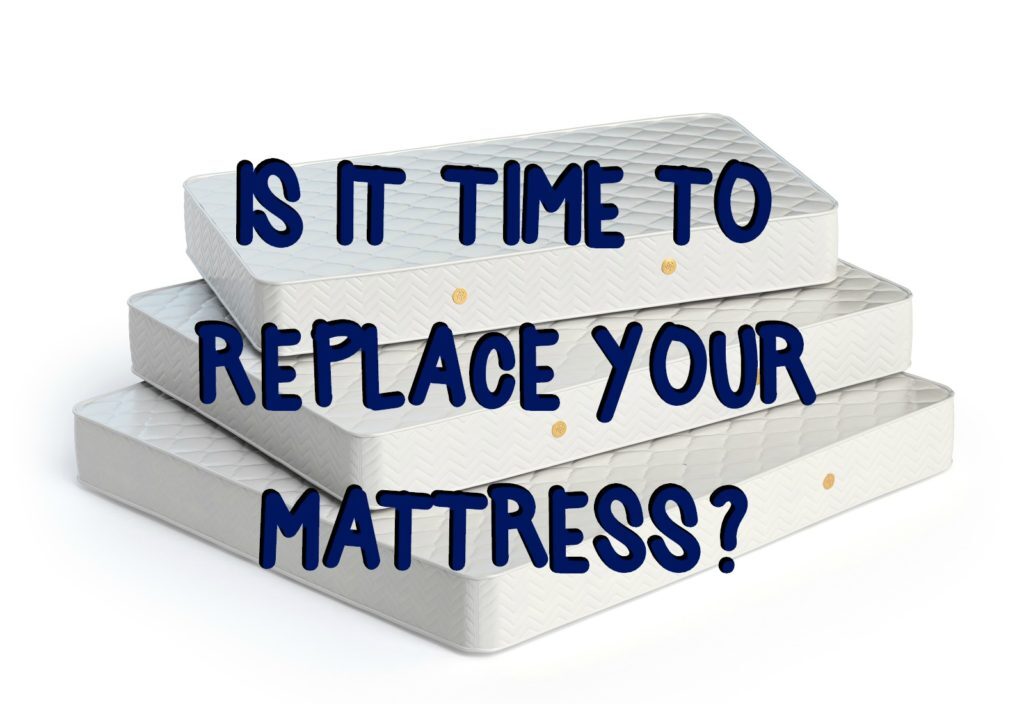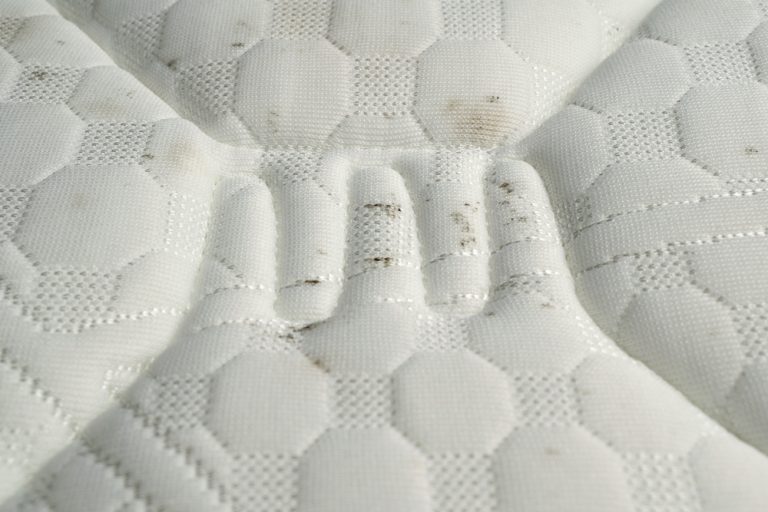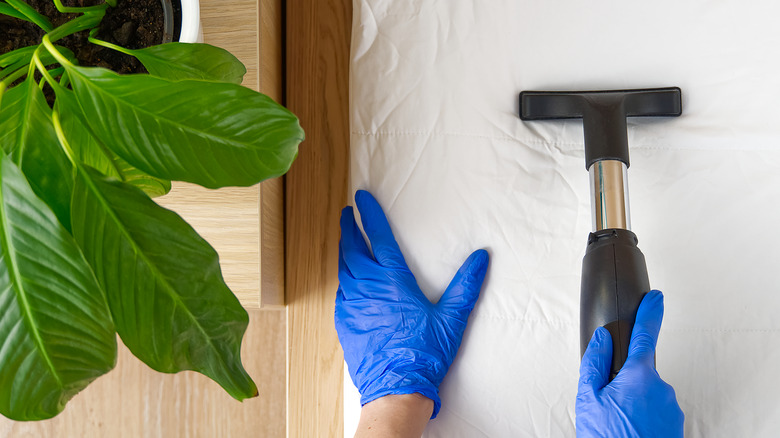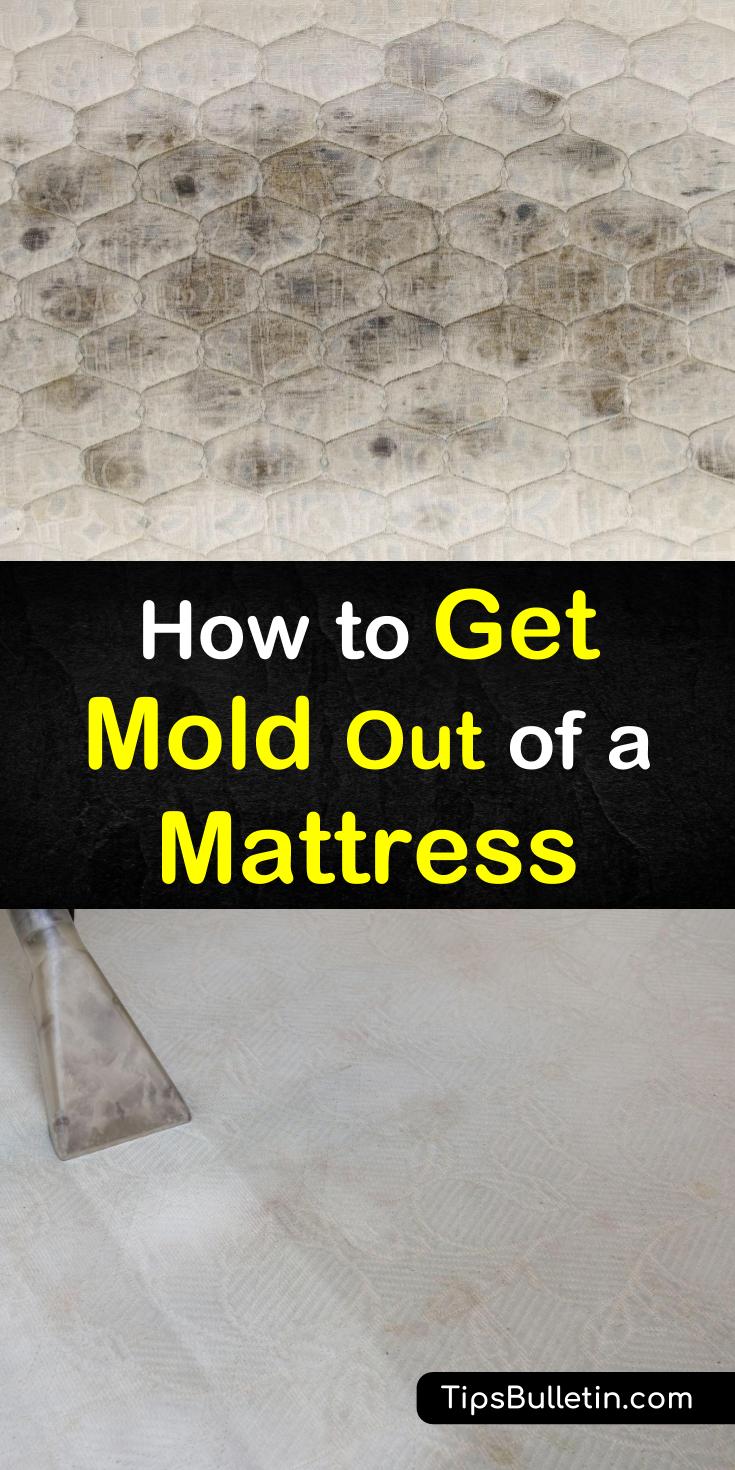Mold is a common household problem that can cause a range of health issues, from allergies to respiratory problems. And while most people take precautions to prevent mold from growing in their homes, many don't realize that their mattress can also be a breeding ground for mold. But don't worry, with a few simple steps, you can prevent mold from growing on your mattress and keep yourself and your family safe and healthy. Here's what you need to know.How to Prevent Mold on Your Mattress
The short answer is yes, your mattress can get moldy. Mold thrives in warm, humid environments, and your mattress provides the perfect conditions for it to grow. Sweat, skin cells, and other debris can get trapped in your mattress, creating a damp and dark environment that is ideal for mold to grow. If your bedroom is particularly humid or you live in a damp climate, your mattress is even more susceptible to mold growth. And while mold may not be visible on the surface of your mattress, it can still be present, causing potential health hazards.Can Your Mattress Get Moldy? Here's What You Need to Know
There are several signs that your mattress may have mold, including a musty odor, visible discoloration, and the presence of mold spores on the surface of your mattress. If you suspect that your mattress may have mold, it's essential to take action immediately. The first step is to remove all bedding and sheets from your mattress and wash them in hot water to kill any mold spores. Next, vacuum your mattress thoroughly, paying special attention to the seams and crevices where mold may be hiding. You can also use a mixture of water and vinegar to spot-treat any visible mold on the surface. If the mold is extensive, it may be best to dispose of the mattress and replace it with a new one to avoid any potential health risks.Signs Your Mattress May Have Mold and How to Get Rid of It
As mentioned earlier, mold thrives in warm, humid environments, making your mattress a prime location for mold growth. But what causes these conditions in the first place? The main culprit is moisture. Whether it's from sweat or spills, any moisture that gets trapped in your mattress can lead to mold growth. This is why it's essential to take precautions to keep your mattress dry, such as using a mattress protector and regularly rotating and flipping your mattress to allow for proper air circulation. If mold does develop on your mattress, the best way to get rid of it is to use a mixture of water and vinegar. Vinegar is a natural disinfectant that can kill mold spores and prevent further growth. Just be sure to let your mattress dry completely before putting any bedding back on it.What Causes Mold on a Mattress and How to Get Rid of It
Prevention is key when it comes to avoiding mold growth on your mattress. Regularly cleaning and maintaining your mattress can go a long way in preventing mold from developing in the first place. Aside from regularly rotating and flipping your mattress, here are a few other tips for keeping your mattress clean and mold-free: 1. Use a mattress protector: A waterproof mattress protector can help prevent moisture from seeping into your mattress, creating the perfect environment for mold growth. 2. Let your mattress breathe: Whenever possible, remove all bedding and let your mattress air out in a well-ventilated area. 3. Avoid eating or drinking in bed: Spills and crumbs can attract mold and other bacteria, so it's best to avoid eating or drinking in bed. 4. Vacuum regularly: Use a vacuum with a HEPA filter to remove any dust, debris, and mold spores from your mattress. 5. Keep your bedroom cool and dry: Use a dehumidifier if needed to keep your bedroom at a comfortable humidity level.How to Clean a Moldy Mattress and Prevent Future Growth
This ultimately depends on how severe the mold growth is on your mattress. If the mold is limited to a small area and can be easily removed, you may be able to salvage your mattress. But if the mold is widespread and has penetrated deep into the layers of your mattress, it may be best to replace it to avoid any potential health risks. It's also essential to consider how long the mold has been present on your mattress. If you have recently discovered mold, it may be easier to remove it and prevent future growth. However, if the mold has been present for a long time, it may have caused irreversible damage to your mattress, making replacement necessary.Can a Mattress with Mold Be Saved or Should You Replace It?
If you're unsure whether your mattress has mold, there are a few telltale signs to look out for. These include a musty odor, visible discoloration, and the presence of mold spores on the surface of your mattress. If you suspect that your mattress may have mold, it's essential to take action immediately to prevent any potential health hazards. Follow the steps mentioned above to clean and disinfect your mattress, and consider replacing it if the mold is extensive.How to Tell If Your Mattress Has Mold and What to Do About It
To recap, here are five tips for keeping your mattress mold-free: 1. Use a mattress protector. A waterproof mattress protector can help prevent moisture from seeping into your mattress and creating the perfect environment for mold growth. 2. Let your mattress breathe. Whenever possible, remove all bedding and let your mattress air out in a well-ventilated area. 3. Avoid eating or drinking in bed. Spills and crumbs can attract mold and other bacteria, so it's best to avoid eating or drinking in bed. 4. Vacuum regularly. Use a vacuum with a HEPA filter to remove any dust, debris, and mold spores from your mattress. 5. Keep your bedroom cool and dry. Use a dehumidifier if needed to keep your bedroom at a comfortable humidity level.5 Tips for Keeping Your Mattress Mold-Free
Sleeping on a moldy mattress can have serious health consequences, especially for those with allergies or respiratory issues. Mold can cause respiratory problems, skin irritation, and even neurological issues in some cases. To protect yourself and your loved ones from these potential dangers, it's crucial to take proactive measures to prevent mold growth on your mattress and address any mold issues that may arise promptly.The Dangers of Sleeping on a Moldy Mattress and How to Protect Yourself
If you're planning to store your mattress for an extended period, it's crucial to take steps to prevent mold growth. Storing a mattress in a damp or humid environment can lead to mold growth, making it essential to choose a storage area that is dry and well-ventilated. Before storing your mattress, be sure to clean and dry it thoroughly. You can also use a mattress protector to provide an extra layer of protection against moisture. And remember to check on your mattress regularly and remove it from storage if you notice any signs of mold growth. In conclusion, mold can grow on your mattress if the conditions are right, but with proper care and maintenance, you can prevent it from becoming a problem. Keep your mattress clean, dry, and well-ventilated, and address any mold issues promptly to ensure a safe and healthy sleep environment for you and your family.How to Properly Store Your Mattress to Prevent Mold Growth
How to Prevent Mold Growth on Your Mattress

Why Mold Growth on Your Mattress is a Concern
 When it comes to house design, mattresses often get overlooked. However, the condition of your mattress can have a significant impact on your health and the overall aesthetic of your bedroom. One of the biggest concerns with mattresses is the growth of
mold
. Mold is a type of fungus that thrives in warm, moist environments, making your mattress the perfect breeding ground. Not only can mold damage your mattress, but it can also cause health issues such as respiratory problems, allergies, and skin irritation. So, can your mattress get moldy? The answer is yes, but there are steps you can take to prevent it.
When it comes to house design, mattresses often get overlooked. However, the condition of your mattress can have a significant impact on your health and the overall aesthetic of your bedroom. One of the biggest concerns with mattresses is the growth of
mold
. Mold is a type of fungus that thrives in warm, moist environments, making your mattress the perfect breeding ground. Not only can mold damage your mattress, but it can also cause health issues such as respiratory problems, allergies, and skin irritation. So, can your mattress get moldy? The answer is yes, but there are steps you can take to prevent it.
How Does Mold Grow on Your Mattress?
 Mold can grow on your mattress for a variety of reasons. One common cause is moisture from sweat and body heat. When you sleep, your body releases moisture, which gets absorbed into your mattress. This creates the perfect environment for mold to grow. Another cause of mold growth on mattresses is poor ventilation. If your mattress is placed on a solid surface, air cannot circulate properly, trapping moisture and creating a breeding ground for mold. Additionally, if your bedroom has high humidity levels, this can also contribute to mold growth on your mattress.
Mold can grow on your mattress for a variety of reasons. One common cause is moisture from sweat and body heat. When you sleep, your body releases moisture, which gets absorbed into your mattress. This creates the perfect environment for mold to grow. Another cause of mold growth on mattresses is poor ventilation. If your mattress is placed on a solid surface, air cannot circulate properly, trapping moisture and creating a breeding ground for mold. Additionally, if your bedroom has high humidity levels, this can also contribute to mold growth on your mattress.
Preventing Mold Growth on Your Mattress
 The best way to prevent mold growth on your mattress is by keeping it clean and dry. Here are some tips to help you keep your mattress mold-free:
Ventilate Your Mattress:
Make sure your mattress is placed on a slatted base or a box spring to allow air to circulate. This will prevent moisture from getting trapped and reduce the chances of mold growth.
Protect Your Mattress:
Use a mattress protector to create a barrier between your body and the mattress. This will help absorb excess moisture and prevent it from seeping into your mattress.
Wash Your Bedding Regularly:
Sweat, dead skin cells, and other bodily fluids can seep into your mattress and provide a food source for mold. To prevent this, make sure you wash your sheets, pillowcases, and other bedding at least once a week.
Rotate and Flip Your Mattress:
Rotating and flipping your mattress every few months can help distribute body weight and reduce the buildup of moisture in one specific area.
Invest in a Dehumidifier:
If your bedroom has high humidity levels, consider investing in a dehumidifier. This will help reduce moisture in the air and prevent mold growth on your mattress.
In conclusion, mold growth on your mattress is a valid concern that can have both health and design implications. By following these preventive measures, you can keep your mattress mold-free and ensure a comfortable and healthy sleep environment. Remember, a well-maintained mattress is not only crucial for good sleep, but also for the overall aesthetics of your bedroom. So, make sure to take care of your mattress to enjoy a good night's rest.
The best way to prevent mold growth on your mattress is by keeping it clean and dry. Here are some tips to help you keep your mattress mold-free:
Ventilate Your Mattress:
Make sure your mattress is placed on a slatted base or a box spring to allow air to circulate. This will prevent moisture from getting trapped and reduce the chances of mold growth.
Protect Your Mattress:
Use a mattress protector to create a barrier between your body and the mattress. This will help absorb excess moisture and prevent it from seeping into your mattress.
Wash Your Bedding Regularly:
Sweat, dead skin cells, and other bodily fluids can seep into your mattress and provide a food source for mold. To prevent this, make sure you wash your sheets, pillowcases, and other bedding at least once a week.
Rotate and Flip Your Mattress:
Rotating and flipping your mattress every few months can help distribute body weight and reduce the buildup of moisture in one specific area.
Invest in a Dehumidifier:
If your bedroom has high humidity levels, consider investing in a dehumidifier. This will help reduce moisture in the air and prevent mold growth on your mattress.
In conclusion, mold growth on your mattress is a valid concern that can have both health and design implications. By following these preventive measures, you can keep your mattress mold-free and ensure a comfortable and healthy sleep environment. Remember, a well-maintained mattress is not only crucial for good sleep, but also for the overall aesthetics of your bedroom. So, make sure to take care of your mattress to enjoy a good night's rest.
